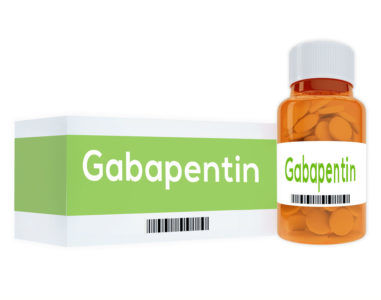 When it comes to selling healthcare products, companies often try to walk a fine line between marketing their product and making false claims about the true ability of their product. Oftentimes there are a lot of semantics at play and the Food and Drug Administration rarely intervenes over product claims unless they feel that the consumer is being grossly misled about a product. It appears they recently felt that way over claims made in the CBD industry.
When it comes to selling healthcare products, companies often try to walk a fine line between marketing their product and making false claims about the true ability of their product. Oftentimes there are a lot of semantics at play and the Food and Drug Administration rarely intervenes over product claims unless they feel that the consumer is being grossly misled about a product. It appears they recently felt that way over claims made in the CBD industry.
We’ve talked about cannabidiol on the blog in the past, and like CBD, medical marijuana or other relatively new products on the healthcare market, our stance has been pretty similar. We want patients to find a solution that works for them, we want further scientific research to better understand these products, and we want patients to pair passive treatment options with active treatments like exercise and physical therapy. Until we can point to the science behind a product, we’re leery to suggest it as a solution other than to say, if it works for you and isn’t compromising your health, go for it.
CBD For Pain, Cancer and More
That’s not exactly the same sentiment felt by Rooted Apothecary LLC, a company based in Naples, Florida, that has been pushing CBD products on its customers. They are legally selling CBD products, but the FDA and the Federal Trade Commission believes the claims they are making about the effectiveness of the products are misleading and even illegal.
Some of the claims made by the company about their CBD products include such unsubstantiated claims as it can be effective for teething pain and earaches in infants, or that “CBD was effective in killing human breast cancer cells.” They also made claims that CBD has been effective in treating Parkinson’s disease, Alzheimer’s disease and can safely be used in conjunction with opioids. Not only are these claims unsubstantiated by science, but they can put the consumer’s health at risk.
“Cannabis and cannabis-derived compounds are subject to the same laws and
requirements as FDA-regulated products that contain any other substance,” said
Acting FDA Commissioner Ned Sharpless, MD, in a press release. “We’ve sent
numerous warning letters that focus on matters of significant public health
concern to CBD companies, and these actions should send a message to the
broader market about complying with FDA requirements. As we examine
potential regulatory pathways for the lawful marketing of cannabis products,
protecting and promoting public health through sound, science-based decision-
making remains our top priority.”
Whether it’s CBD or another health and wellness product, we recommend that you do your own research and consult with your physician if you have any questions, especially if you’re already trying certain treatments for your pain. If something sounds too good to be true, it probably is. CBD is far from snake oil, but it’s not a magic pill either. Do your research, trust your gut and consult a professional for any questions you have.
 Roughly one in five Americans suffers from chronic pain, and millions of opioid prescriptions were written just last year alone. However, it has become clear that opioids are far from a perfect solution for chronic pain. Overdoses and cases of addiction have skyrocketed as doctors have tried to help patients find a way to reduce their pain. As we’ve learned more about the dangers of opioids, doctors have begun to turn to different solutions to the chronic pain puzzle, one of which being gabapentin.
Roughly one in five Americans suffers from chronic pain, and millions of opioid prescriptions were written just last year alone. However, it has become clear that opioids are far from a perfect solution for chronic pain. Overdoses and cases of addiction have skyrocketed as doctors have tried to help patients find a way to reduce their pain. As we’ve learned more about the dangers of opioids, doctors have begun to turn to different solutions to the chronic pain puzzle, one of which being gabapentin. Should you fuel up before hitting the gym, or is it best to burn calories on an empty stomach? That’s the question researchers at the University of Bath in England sought to answer with their latest study.
Should you fuel up before hitting the gym, or is it best to burn calories on an empty stomach? That’s the question researchers at the University of Bath in England sought to answer with their latest study. New research out of Canada found that individuals with
New research out of Canada found that individuals with  Earlier this week, Minnesota regulators announced an expansion to the state’s medical marijuana program, as they added chronic pain and age-related macular degeneration to the list of conditions that can make a person eligible for treatment. The state’s Health Department also said they planned to expand to more sites so patients can have easier access to medical marijuana.
Earlier this week, Minnesota regulators announced an expansion to the state’s medical marijuana program, as they added chronic pain and age-related macular degeneration to the list of conditions that can make a person eligible for treatment. The state’s Health Department also said they planned to expand to more sites so patients can have easier access to medical marijuana.